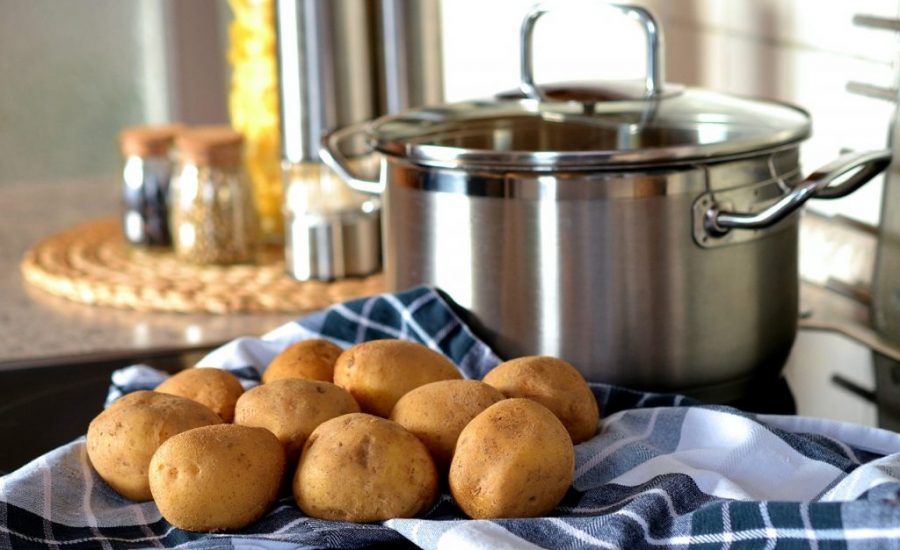Make the best use of summer break with these tips to let your children understand and appreciate food.
Kitchen is a great place to spend time with children this summer break. You might wonder, but it’s vacation time, we should let kids have fun! However, ‘fun’ is a word sometimes misinterpreted and attributed to things only in entertainment space!
If your children find opportunities to play with neighbourhood kids or spend time with their grand parents, it is great. Also some of us prefer traveling to new places. All this done, there is still ample amount of time left to spend in your home kitchen. What if we take this opportunity to let them know some basic life skills, like cooking?
My mom, coming from a big family, tells me how she and her siblings, used to take turns to do dishes, fill drinking water, hand pound spices, to hand grind dosa batter, clearing the grains etc. It was part of their daily chores during childhood and it did not limit to just summer break. This might not look very practical in today’s time. The advancement of technology, comfort, number of children, schedule of schools, offices, traffic, among other things make very little time to do such work willingly. Hence summer break should be treated as a huge opportunity to keep things slow, steady and work on those activities that are essential for a living. Here are some reasons why we should let our children experience the most soulful space of the home, the kitchen!
Focus on the whole cycle
When we want to teach kids, it immensely helps to follow the complete process, rather than sticking to some interesting part in the middle. For example, if they want to do some drawing – fetching the paper, pencils & colors, setting up the space, drawing, displaying/saving the art, keeping the art materials back in their places etc form the whole activity. If we do the whole process and let kids do only drawing, the sense of accomplishment differs from the former to the latter.
Similarly, for cooking, it would be great if we can do a complete cycle. Starting from planting the seeds, watering them regularly, adding compost and other natural nutrition, watch the vegetables and greens grow, fetching them from the home garden to kitchen, getting other essentials from a market, washing, peeling and chopping them (also saving the peels for composting), garbage segregation, cooking, setting the table, serving, eating, clearing and washing the dishes – make this as close to complete process as possible.
If gardening is not an option for you, you could replace it with just a market visit. If market visit is not possible, start with washing vegetables. The intention is to make a start and do our best in making it as complete as possible for kids. This ensures that children try to appreciate, how on other days, their plates are magically filled with mouthwatering recipes! The chances of them wasting food (if any) would also decrease.
List your favorites
If such time spending for cooking on a daily basis is a concern, try listing out recipes that take minimal time. For example, you could start with making lemonade or a banana shake at home. Once the child is comfortable, ask them to prepare and serve the dish by taking help from his/her friends, when they come for a play date. Time for you to relax and watch how quickly kids adapt and learn.
The little master chef
Working with a food recipe platform has its own perks! My child now asks the question, “what are the ingredients?” whenever he likes a particular recipe. He knows where is which item in our kitchen. He knows that either sambar or dal is getting made whenever he watches me rinsing a dal. Hence children are quick to learn from observation than instruction and this method works more so well with children below 7 years. All they need is an opportunity to observe an adult immersed in meaningful work.
Sorting can be fun
Arranging the vessels by size, sorting storing the vegetables by type, color, shape etc, fetching the right fruit from the fruit basket etc are some fun ways to learn and understand the food we eat. It works better than going through a book where ‘A for Apple’ is written with a pictorial representation. When it comes to sensory impression, try giving them atta dough, plucking grapes, washing rice/dal, mixing ingredients for cake batter etc.
Ways to learn about and appreciate what we eat every day are endless. Take time out to let children have this vital experience. Even if they are occupied with summer camps, you could make a start with making it a weekend activity. Once they experience such process, you no longer need to tell them that spinach is nutritious, dal is protein-rich etc to make them eat. Because there will be an inclination and connection with what is present on their plates.



No comments yet.